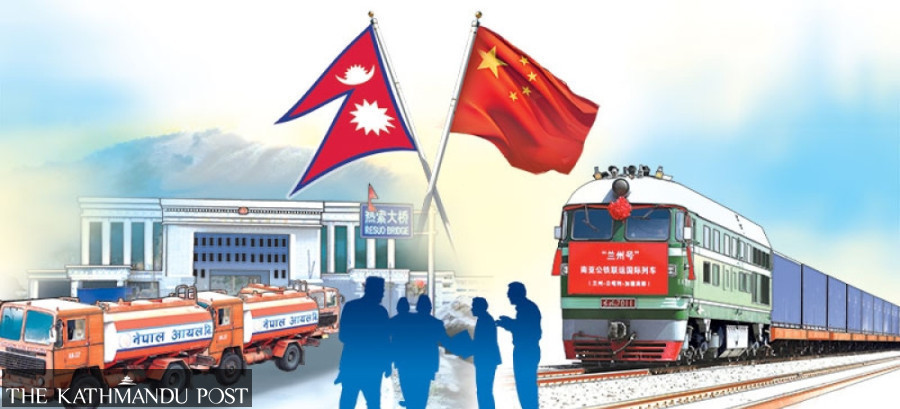Editorial
BRI: What’s the plan?
More than a specific initiative, this is a question of how Nepal balances its strategic interests.
Seven years after Nepal signed up to Chinese President Xi Jinping’s signature Belt and Road Initiative (BRI), there is still no clarity on what being its part means for Nepal. Most recently, meeting in Beijing, Foreign Minister Narayan Kaji Shrestha and his Chinese counterpart Wang Yi agreed to ‘very soon’ sign the ‘BRI implementation plan’. Chinese officials say signing it is a prerequisite for economic cooperation with Nepal as well as for executing the projects China has already committed to. As the plan is yet to be made public, it is hard to make definite comments on it. Some believe there is no need for a separate plan for execution of agreed and planned projects. The best course of action would be to take the 2017 BRI framework agreement as well as the recent implementation plan to the sovereign Parliament, and let it settle them once and for all. This was also what happened with the Millennium Challenge Corporation-Nepal compact in 2022 after it attracted much controversy.
A cloud of secrecy also engulfs the modality of Nepal’s cooperation with China. For instance, on the eve of his ongoing China visit, many top government officials reportedly advised Foreign Minister Shrestha not to involve China in power projects, as such a cooperation is already being pursued with India. Why invite unnecessary conflict of interest, they advised. But the question is: Can Nepal afford to completely rely on a single country for the development and consumption of hydropower, its most important strategic asset? Or do these officials know what we don’t? Before blaming the Chinese, it would also be worthwhile to recall that it was Nepal that proposed a whopping 35 projects to be undertaken in Nepal under the BRI. The number was later whittled down to nine. Why were we so keen to pursue so many projects without even understanding the modality for their execution? And what now explains the apathy on BRI execution?
If Nepal and China are to pursue meaningful cooperation under the BRI, it is vital to bring transparency to the process. The government is reportedly not interested in pursuing BRI projects with high-interest loans. If this is Nepal’s position, how have the Chinese responded? Have they been putting Nepali officials under pressure to sign up for such loans? On the other hand, Chinese officials and delegates who come to Nepal often complain that Nepali officials don’t understand the BRI. They too seem frustrated with lack of progress. It almost seems like the two sides are talking past each other.
More than the BRI, this is a question of how Nepal balances its strategic interests, at least in relation to big powers like India, China and the US. The goal is to ensure that the country does not have to heavily rely on any one country as it pursues its development and infrastructure goals. It is vital to quickly clear the air on the BRI so that bottlenecks can be removed and an atmosphere of trust built with Beijing. Land-locked Nepal just cannot afford to have bad relations with any of its two neighbours. Hopefully, Foreign Minister Shrestha’s China visit will help give the process of cooperation under the BRI framework more clarity—as well as some much-needed momentum.




 17.12°C Kathmandu
17.12°C Kathmandu














